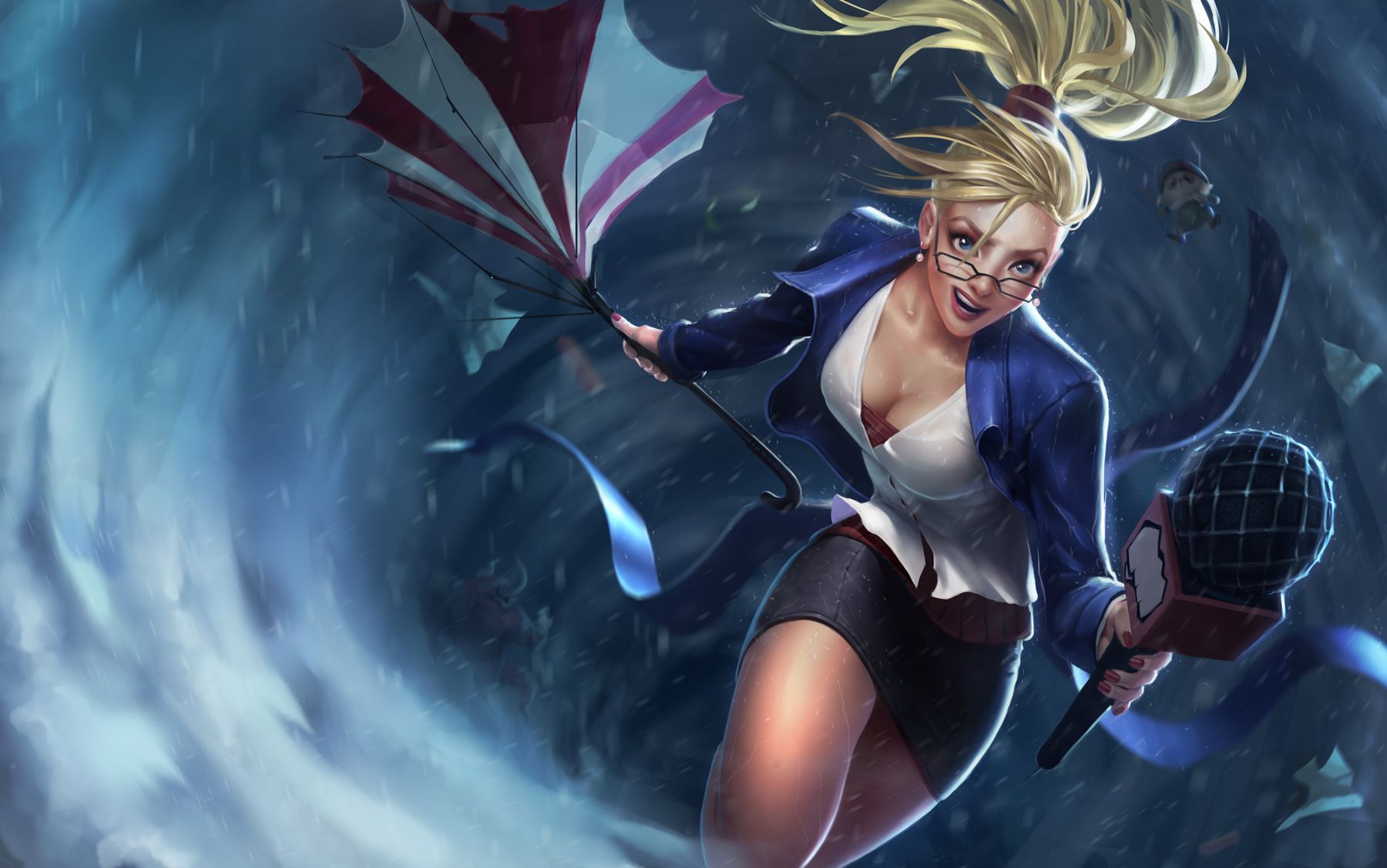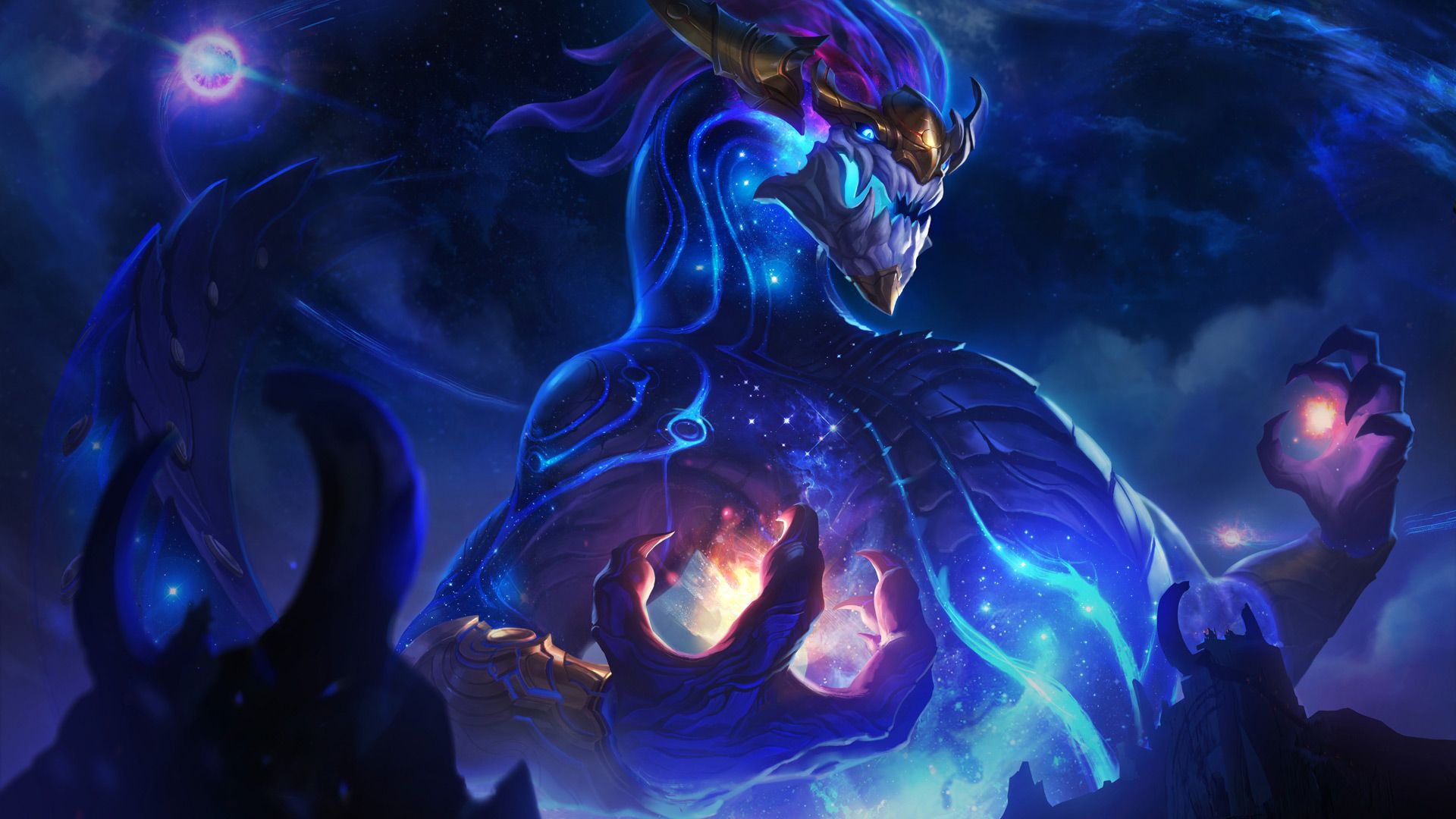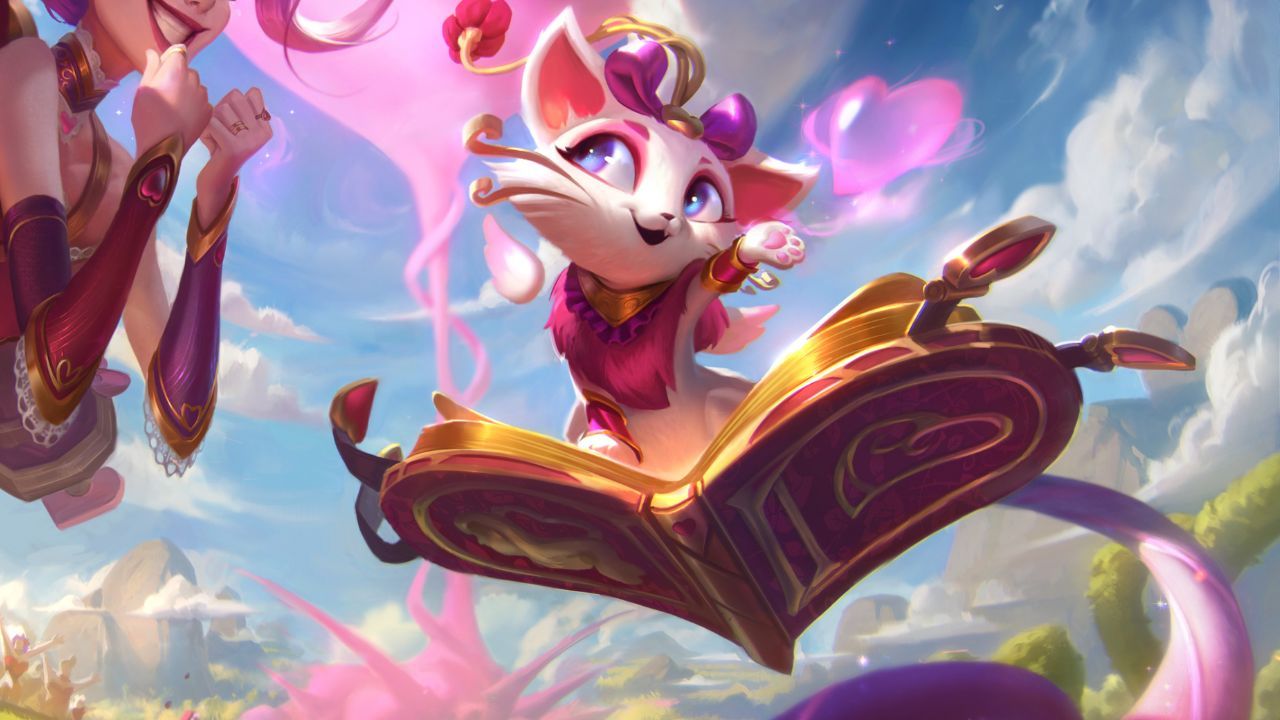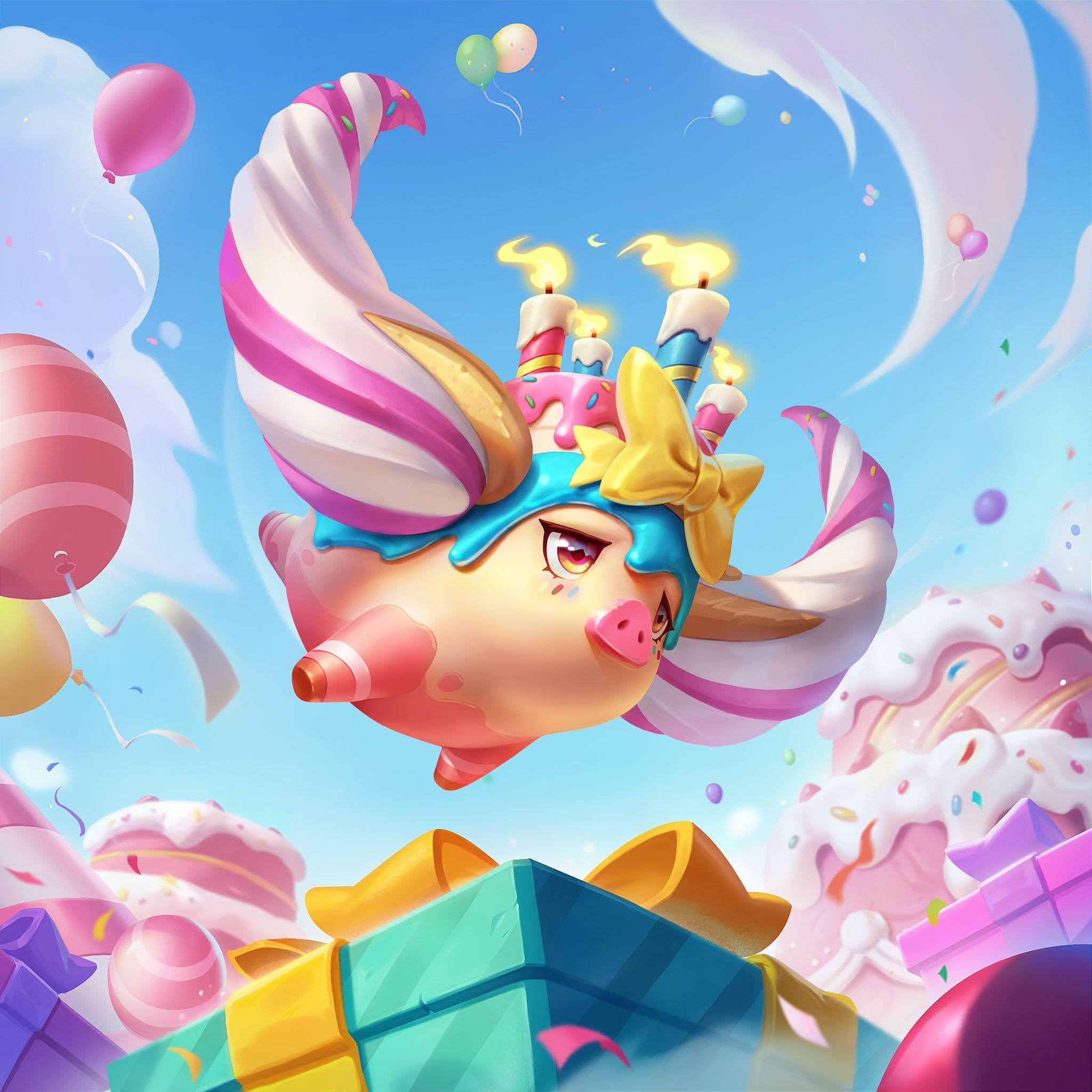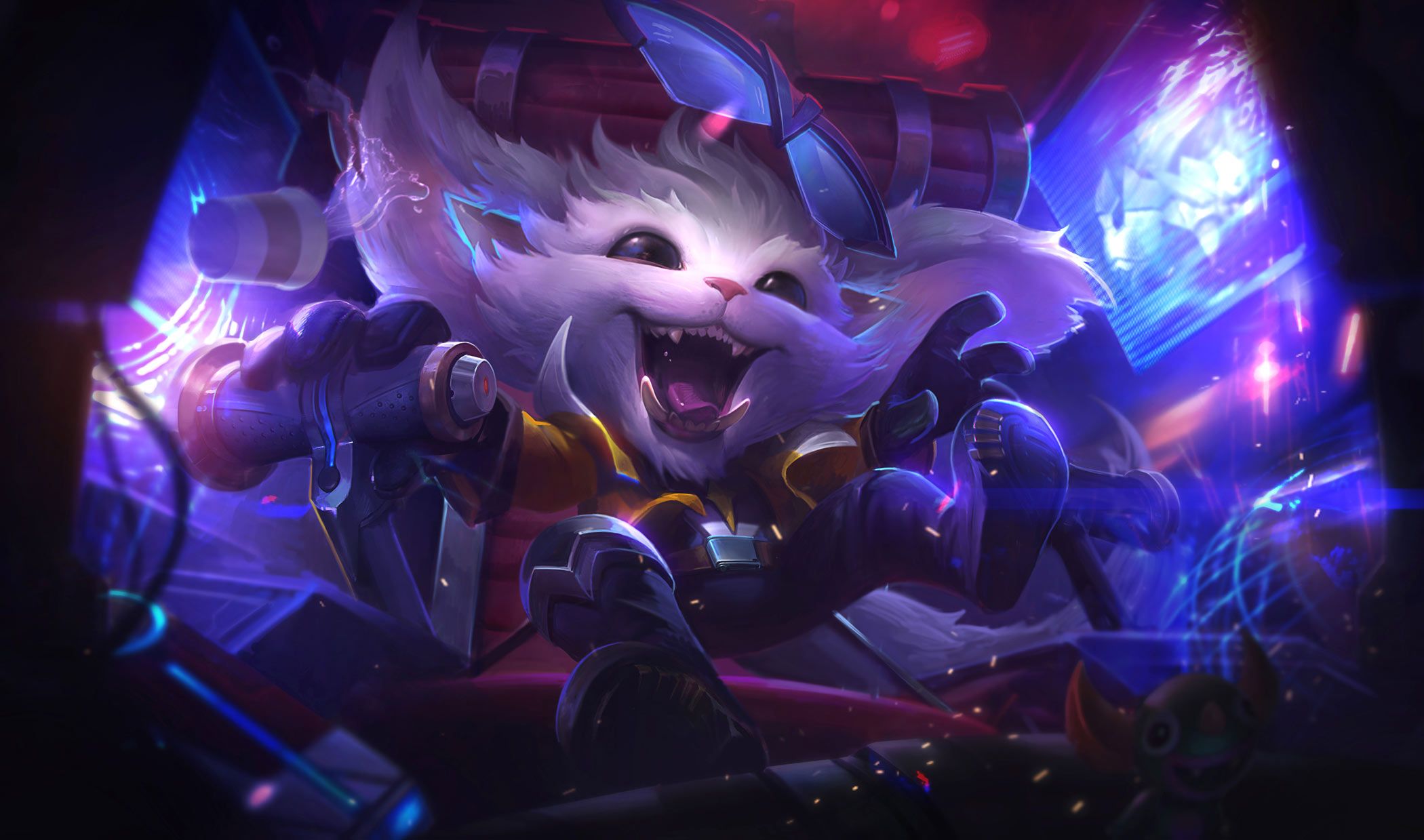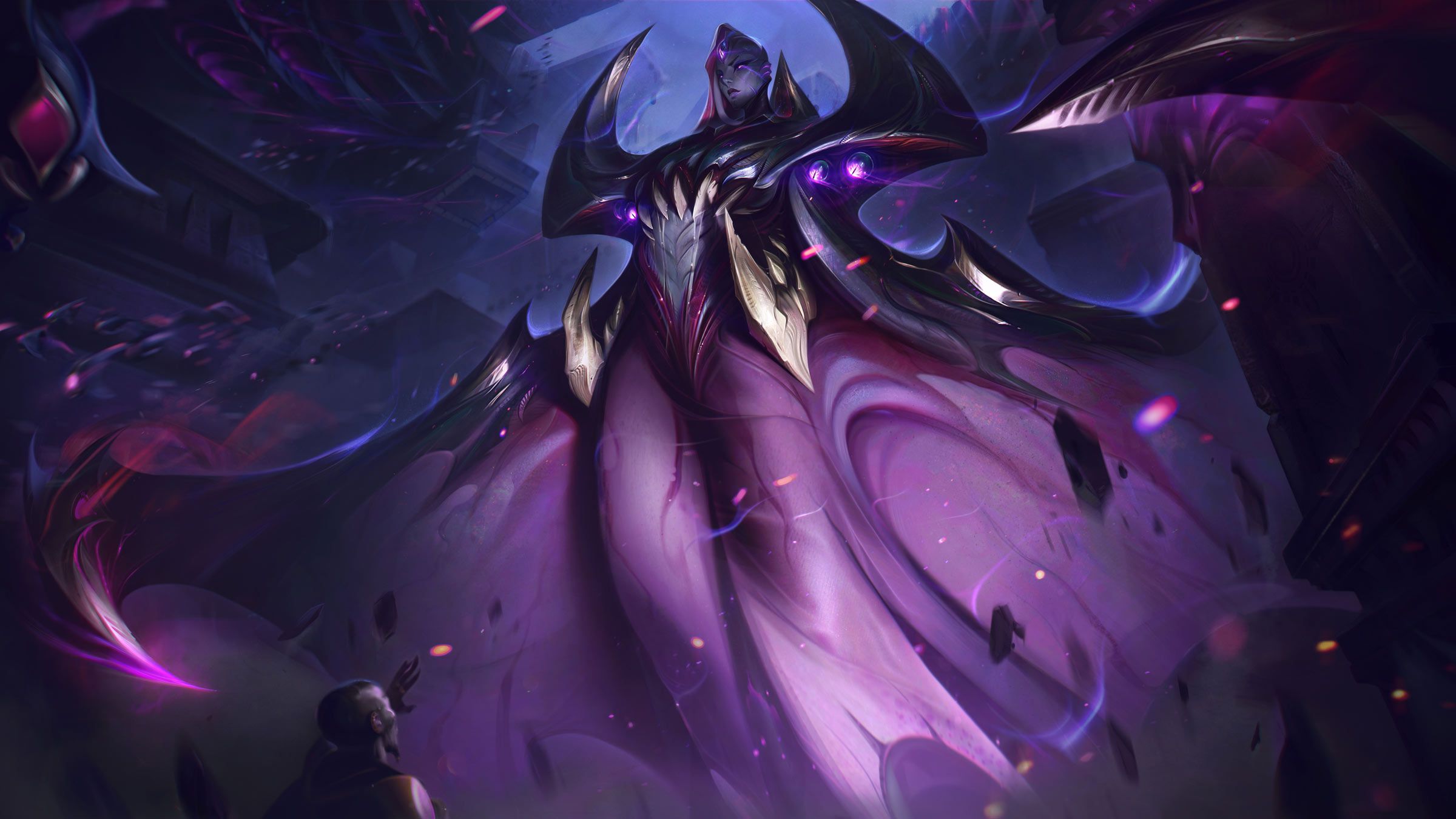/Dev Teamfight Tactics: Monsters Attack! Learnings
With about a month left in Monsters Attack! it’s time to take a break from saving Spatulopolis and reflect upon what we promised to deliver this set, and how we can improve for our next set!
TL;DR
As per usual, this is a long one. We’re going to get into some design philosophy here, so if you are tight on time, here’s a TL;DR:
Looking Back: This is where we directly respond to the goals we created last set in our previous Learnings article.
- Compositional Variety: Our biggest learning from Dragonlands is that we never want to reduce the amount of possible team building outcomes. We took this to heart when crafting Traits that encouraged compositional variance by adapting to each lobby.
- Dragons: By taking up two slots, being pricey, and adding 3 to their origin trait, Dragons hindered composition variety and flexibility. So we took a break from Dragon-like units while focusing on how to open up compositional variety and flexibility. We will continue to avoid two-slot champs for a while until we can execute in a way we’re happy with.
- Champion Power Expectations: Some TFT truths have been ingrained in the players’ minds since day one. For instance, a more expensive 2-star unit should be more powerful than a less expensive 2-star. While we broke this rule on occasion with Supers Yuumi comps, or even Kai’Sa reroll in Glitched Out!!, we did much better than Dragonlands, and are committed to ensuring the balance matches player expectations.
- Early Game Economy & Risk/Reward: With Monsters Attack! we turned our focus from drip-reward econ traits to big cashouts with Underground. We’re going to continue to keep traits in the cashout space, while keeping drip economic strategies as Augments since they’re still a lot of fun to play when done right.
- Bugs & Balance: Dragonlands came in hot. Both the main set and the mid-set launched with more bugs than is acceptable, AND there were a few balance issues across the set. Since then, our Game Analysis Team has been spun up, resulting in a much smoother release for Monsters Attack!, but you should expect to see even more polished releases once our new set model kicks in (in two sets’ time).
- Augments: While we’ve had a tough time with a few Augments throughout the set, we’re happy with the variance and excitement that Augments add to the game, and we’re committed to taking the Augment system to the next level with our next set.
Looking Forward: This is where we set out a list of goals to improve upon for the next set!
- Almost Four Years Later: We’re close to four years old and a lot of our core systems are in a great place. That being said, you may have noticed our philosophy around game improvements changed with Monsters Attack! We now ship quality of life changes and improvements, such as item distribution in patch 13.5, as soon as we can, instead of waiting for bigger releases. That being said, we have even more of those coming in the next set.
- Backline Access - Hackers & Assassins: It was nice having a break from Assassin, but Hacker highlighted what we do not like in backline access—the ability to instantly burst a carry. So moving forward, we’re going to make sure that backline carry removal is much harder to pull off.
- Threats - Hyper-flexible Champions: Threats were one of our biggest successes in Monsters Attack!. Having champions that can be plugged into any comp depending on the game state proved to be incredibly engaging. So moving forward to our next set, there will be at least one Threat-style champion.
- Augments - +1 Traits: We had some struggles with Augments that allowed for instant access into deep and powerful trait breakpoints. With more ways into these deep traits through things like Tome of Traits and Augments, we’re going to keep a very close eye on Augments that grant access to significant trait breakpoints in the future, and be more willing to disable or remove them as needed.
- Augments - Refreshing Content: We’re happy with Augments as an evergreen system, but some have overstayed their welcome. Expect us to refresh the vast majority of Augments next set.
- Hero Augments: This is the big one. We learned a lot from Hero Augments, like what makes one interesting, and how much control players should have over systems with this much impact (i.e. Rerolls).
Looking Back
To start off, let’s take a look at the last learnings article and see how we did.
Compositional Variety:
One of our biggest learnings coming off of Dragonlands is the importance of a diverse meta—one where many comps can succeed and each game feels like a different challenge. With Monsters Attack!, we made big steps towards this end.
Comps had a ton of variety with splashable traits like Aegis, Defender, Ox Force frontlines, Star Guardian, and especially Threats. More so than any unit or trait we’ve made in the past, Threats greatly enabled compositional variance at almost all stages of the game. We saw them being used as item holders, utility adds, income generators, or just damage monsters.
But in addition to having a trait structure that supported diverse comps, we also had champions like Twisted Fate, who could be played outside of their traits and do well. And we can’t forget Janna, whose Forecaster trait made her an auto-include in many comps, even when Spellslinger was inactive.
Finally—and we’ll talk about this more later—certain Hero Augments enabled comps we’ve never seen before. This was a stark contrast to the deep verticals and narrow comps we saw coming off of Dragonlands. With so many comps finding success throughout Monsters Attack!, we will continue to prioritize mechanics and trait webs that promote comp variety across all stages of the game.
Dragons:
We took a break from two-slot champs, and we’re happy with the results. Dragons limited team-building combinations significantly throughout Dragonlands, especially when we limited you to one Dragon per comp. But even when you could field as many Dragons as you wanted, having these units take two slots still constrained the number of different unit combinations you could make.
Another thing about Dragons was their cost. Having Dragons be the most expensive units made for a pretty rigid endgame, where the most powerful board was just a bunch of Dragons. While this made sense on a gameplay and champion power expectation level—the most expensive units should be the most powerful ones—this created a rather stale late game due to the lack of diversity in endgame boards. For this reason, we will avoid using two slot champs for a while until we can execute in a way we’re happy with.
Champion Power Expectations:
When we talk about champion power expectations, we talk about the implicit laws of when one unit should be better than another. For example, a 2-star four cost champion should be stronger than a 2-star three cost champion. We generally hit this goal in Monsters Attack! with a few exceptions such as Jax early on, or Kai’Sa and LeBlanc in Glitched Out!!.
Then there was the Yuumi comp. Yuumi, with her carry Augment and perfectly constructed comp, created a situation where her power level FAR exceeded what any two cost should be. That being said, Yuumi presented an interesting situation: while she was overtuned, it was actually the entire team comp that fueled her reign of terror. Supers amplified her damage, while Mascots created an unkillable frontline with healing that scaled exceptionally well (starred-up champions = large health pools). This was a situation where an entire comp gave a two cost unit the power of a four cost, which did not align with expectations of champion power.
We also took some risks with Mecha: PRIME. Coming off of Dragonmancer, we knew it could be an issue if something like a Mech Draven ended up too strong, we could see a repeat of a 2 cost beating 4 costs because of Mech. This is also why we limited it to consuming 2 units to ensure a power spike that made sense. Overall with a few exceptions (Sett when he was too strong, or Hacker Draven) we managed to do pretty ok for a super unit. We think this design space is still worth exploring, but agree it will always be a risky area to explore.
Beyond a few balance outliers, it’ll take some more work to make sure 3-star four and five cost units feel and act as powerfully as they should. Even towards the end of the set, it's very possible for 3-star four and five cost to lose to 2-star units. The 4000 HP we added for 3-star five costs in patch 13.9 patch was a step towards solving for the power expectation discrepancy—3-star five costs should be the strongest units in the game, BY A LOT.
We’ve also seen situations (most notably in a NA LCQ game where a 2-star Miss Fortune beat a 3-star Warwick, Belveth, and Samira) where the discrepancy between power levels at the highest echelon become blurry. While these scenarios are rare, they are still balance scenarios we need to solve, without making 3-star four costs auto win conditions like they have been in the past, and we are continuing to take steps to ensure the balance matches player expectations.
Early Game Economy & Risk/Reward:
Economic traits are incredibly important for TFT, and making sure these traits are accessible and exciting is a priority for the team. In Dragonlands, we had a number of economy traits, but they largely functioned as drip reward traits. Drip rewards are where every turn you do something, you are granted a small reward. Astral, Lagoon, and Shimmerscale would do this in Dragonlands. These drip rewards are extremely powerful—especially in Stage 2—due to the way compounding interest in our economy works, but they aren’t as exciting as a big cashout from past econ traits like Fortune or Mercenary.
In Monsters Attack!, we removed drip economy early, which was very successful and led to a much healthier early game. While drip econ rewards create a novel playstyle, they are far too warping of the general game flow, so we will continue to only explore those options in the Augment system moving forward. The good news is that the Augment space give us a lot of room to create these types of experiences for the players that love them. Hero Augments like Gangplank’s Get Paid and Sivir’s Time and a Half were exciting and healthy designs.
Bugs & Balance:
Dragonlands came in hot. Both the main set and the mid-set launched with more bugs than is acceptable, AND there were a few balance issues across the set. Last time we spoke about this I announced that we had already begun spinning up a new team to handle bugs and balance, the Game Analysis Team (GAT). Back then, I also told you that we were still filling positions on that team. GAT has now been filled out, and we should expect to see a higher quality release starting with our next set.
That being said, let’s chat about Monsters Attack!. We still had bugs and balance issues on release, but we did significantly better than Dragonlands. The team size is growing, and switching to three sets a year allows for more polished sets and more dedicated dev time on each one. Expect to see the fruits of our new set model starting with the set after next, but you should also be noticing a higher quality release as mentioned above starting in the next set with our new GAT team helping.
Augments:
Augments will continue to be evergreen, as there’s still lots of design space to explore. Read on for our learnings from Hero Augments, and find out how we will continue to push the mechanic even further with our next set.
Looking Forward
Almost Four Years Later:
TFT is close to four years old! We’ve gotten to a point where our core systems (items, champions, traits) are all in a great spot. That’s not to say this wasn’t without our fair share of mistakes and learning—I mean we have been doing these looking back articles since our very first set. But we’re now at a point where a lot of our learnings are coming from specific mechanics rather than the broader TFT game systems.
With that said, I want to call out a specific change that does impact broader TFT game systems. The rules around item distribution have created player pains for a while, and in patch 13.5 we made some momentous changes to the system to make it much more fair, while also maintaining game to game variability. We’re always looking to improve the game as expectations change, and finding ways to improve at any point, not just with new set releases, is going to remain our strategy moving forward. We’ve got some quality of life changes coming very soon, and some even bigger stuff in the future, so stay tuned.
One last callout, the above image for this section is the splash of our new Birthday Surprise Fuwa coming to players for Free (via a mission) with patch 13.12!
Backline Access - Hackers & Assassins:
It was nice to get a break from Assassins, and Hacker was a very thematic way of replacing them. However, especially in Glitched Out!!, Hacker gave us even more insight into the most frustrating part of backline access. Having your primary 3-item damage dealer deleted in the first 5 seconds of combat is never fun, and Hacker enabled this too consistently. Now here’s the big BUT—backline access still creates interesting positioning challenges that are incredibly cool to watch when done successfully. The problem is when the backline access has a massive burst that completely negates single carry comps (most comps). So moving forward we’re going to make sure that backline carry removal is much harder to pull off.
Threats - Hyper-flexible Champions:
One of the biggest successes from Monsters Attack! was Threats. Having champions that provide some unique utility and don’t lock you into a direction was very exciting. Rammus (much to my disapproval) as a core front liner until you upgrade him; Bel’Veth as a good early consistent source of damage; Aurelion Sol providing anti-heal and damage later; Morgana with her insane utility. All were very successful.
On the five-cost side, we had to be careful that these flexible units weren’t auto-included in every comp like Fiddlesticks and Urgot often were. So moving forward to our next set, there will be at least one Threat-like champion, but we’re going to be working hard to make sure that champion will not be an auto-include in every composition. Also, we are likely going to do some more design exploration with flexible units, as we think there’s a lot of unique possibilities here.
Augments - +1 Traits:
This set struggled a bit with Augments that gave +1 to a trait, specifically around traits that had powerful thresholds gated by tricky access to their later tiers. LaserCorps, Gadgeteen, Star Guardian, and Riftwalker were all offenders in this space, where having access to their higher tiers early gave a significant advantage. That being said, we love these kinds of Augments as the Emblems especially open up new team building combinations, and who doesn’t enjoy experimenting with Riftwalker Zac comps? But, we have to be a lot more careful around things like chase traits and hitting breakpoints early, especially when the power levels of these traits are supposed to be high due to them being locked behind high-cost champions (Gadgeteen’s Nunu & LaserCorps Mordekaiser). With there being more availability into these deep traits through things like Tome of Traits and Augments, we’re going to be keeping a very close eye on Augments that grant access to significant trait breakpoints in the future, and be more willing to disable or remove them as needed.
Augments - Refreshing Content:
This is our 3rd set with Augments and we’re still super happy with what they bring to the table. The system has so much to uncover, and Hero Augments (more on these later) continued to prove this. So, Augments aren’t going anywhere. However, I think we’re starting to get to the point where some of the long-time staples like Celestial Blessing, Phony Frontline, Second Wind, and more have overstayed their welcome. Another set playing with the same core Augments is too much, so with our next set, we’re doing a VERY large Augment refresh. Expect these new Augments to range from slight variations of existing concepts to completely new design spaces. I, for one, am incredibly excited to see what you all make of them.
Hero Augments:
And now, the core set mechanic: Hero Augments. Hero Augments had their share of challenges. They would often lock you into a specific comp and make it difficult to pivot around, they weren’t always well balanced with each other, some were only good in extremely narrow and niche scenarios, and game outcomes could shift wildly based on what costs would appear. The constraints that Hero Augments placed on the game created frustrating situations when you were offered options that didn’t support the direction you wanted to take your team comp, or just weren’t fun for you. So come patch 13.3, we added four Hero Augment rerolls, a significant change that increased autonomy over a system that had a significant impact on your team composition. This was a bold and controversial change at the time and I’d be lying if I did not say that it split the community. But after playing more than half a set with four rerolls, could you imagine going back to just one?
We learned a lot when we implemented additional Hero Augment rerolls, and you will definitely be seeing those learning being applied in our next set as we think about improving the Augment system.
Finally, we should spend some time discussing what we learned about Hero Augments in regards to the quality, or funness of them. Like sticklers for grammar when I use the word funness, we weren’t super happy with Augments that were just “Make the champion even better”—Vayne’s Spread Shot, for example.
However, we tested some design spaces that we’re still happy with. Augments like Neeko’s Easy Being Green, which reward specific items, in this case Spear of Shojin with additional AP, created a fun sort of mini-game: build Spears of Shojin. We also had some incredibly fun and transformative Hero Augments that would completely change how you play a champion—this was especially effective with low-cost champions like Nasus’s Stacks on Stacks and Shen’s Time Knife (once we made it unique). These transformative Augments opened the way to completely unique team compositions that really allowed players to unleash their 5-head plays… or just slam a Rapid Firecannon on your Shen. So we’re taking the highs of Hero Augments as learnings when building new Augments for our next set—expect a small percentage to be inspired by our favorite ones.
That’s it for now. Thanks for saving Spatulopolis and giving us your feedback along the way. These articles are just one way of acknowledging your feedback; the other way—the more important one—is by applying our learnings in our next set and beyond. In fact, we may have something to share as soon as May 30th… so stay tuned and keep an eye on the nearest Portal! Until next time, take it easy!
